
Nobusuke Kishi was a Japanese bureaucrat and politician who was prime minister of Japan from 1957 to 1960.

Ichirō Hatoyama was a Japanese politician who served as Prime Minister of Japan from 1954 to 1956. During his tenure he oversaw the formation of the Liberal Democratic Party and restored official relations with the Soviet Union.

Takeo Miki was a Japanese politician who served as prime minister of Japan from 1974 until 1976.

The House of Representatives is the lower house of the National Diet of Japan. The House of Councillors is the upper house. The composition of the House is established by Article 41 and Article 42 of the Constitution of Japan. The House of Representatives has 465 members, elected for a four-year term. Of these, 176 members are elected from 11 multi-member constituencies by a party-list system of proportional representation, and 289 are elected from single-member constituencies.

Seigō Nakano was a journalist and politician in Imperial Japan, known primarily for involvement in far-right politics through leadership of the Tōhōkai party, as well as his opposition to Tōjō Hideki and eventual suicide under murky circumstances.
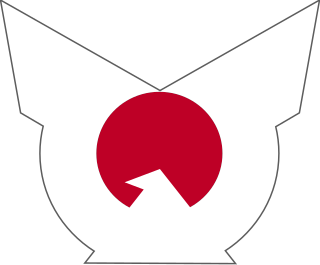
The Imperial Rule Assistance Association, or Imperial Aid Association, was the Empire of Japan's ruling political organization during much of Second Sino-Japanese War and World War II. It was created by Prime Minister Fumimaro Konoe on 12 October 1940, to promote the goals of his Shintaisei movement. It evolved into a "statist" ruling political party which aimed at removing sectionalism and factionalism from politics and economics in the Empire of Japan, creating a totalitarian one-party state in order to maximize the efficiency of Japan's total war effort in China. When the organization was launched officially, Konoe was hailed as a "political savior" of a nation in chaos; however, internal divisions soon appeared.
The League of Diet Members Supporting the Prosecution of the Holy War was a political party coalition in the lower house of the Diet of Japan formed on March 25, 1940, with the backing of the Imperial Japanese Army as a reaction against a speech made by Saitō Takao, of the Rikken Minseitō critical of the government’s aggressive policies in the Second Sino-Japanese War.

Kan Abe was a Japanese politician who served in the House of Representatives from 1937 to 1946. He was the father of former Foreign Minister Shintaro Abe and the grandfather of former Prime Minister Shinzō Abe.

Fumio Gotō ) was a Japanese politician and bureaucrat, and briefly served as interim Prime Minister of Japan in 1936.

Factions are an accepted part of the Liberal Democratic Party (LDP), the ruling party of Japan, which began with eight formal factions when it was first formed by merger in 1955. A political faction may be defined as a sub-group within a larger organization. While factions characterize other political parties in Pacific Asia, Japanese factionalism is distinguished by its stability and institutionalization. Although factions reconstitute themselves from time to time, the habatsu active today can be traced back to their 1955 roots, a testament to the stability and institutionalized nature of Liberal Democratic Party factions.
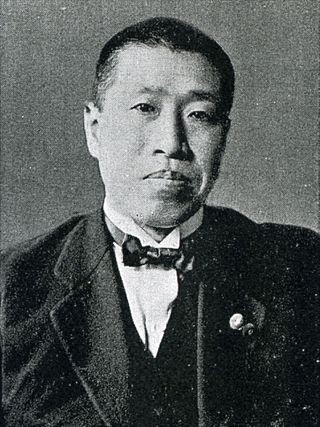
Ryūtarō Nagai was a politician and cabinet minister in the Empire of Japan, serving a member of the Lower House of the Diet of Japan eight times, and four as a cabinet minister. He was noted in his early political career as a champion of universal suffrage, social welfare, labor unions, women's rights and Pan-Asianism.
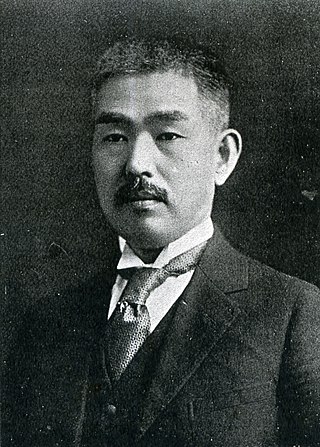
Tsuneo Kanemitsu, was an entrepreneur, politician and cabinet minister in the Empire of Japan, serving eight terms as a member of the Lower House of the Diet of Japan, and twice times as a cabinet minister. He also served twice in the post-war Lower House of the Diet.
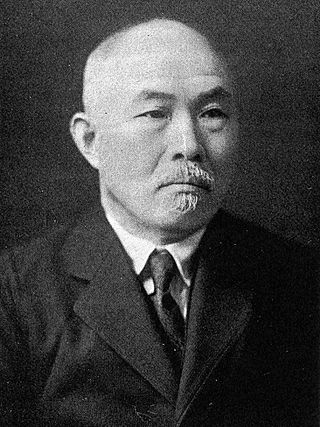
Toshio Shimada was a politician and cabinet minister in the pre-war Empire of Japan.
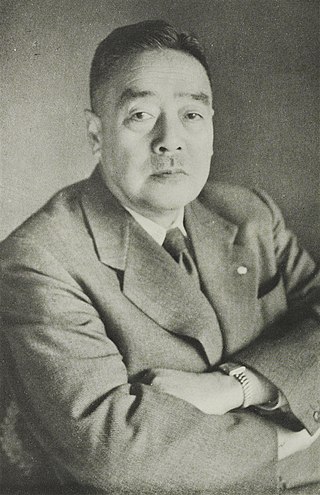
Taketora Ogata was a Japanese journalist, Vice President of the Asahi Shimbun newspaper and later a politician. During the war, he joined the Imperial Rule Assistance Association. After the end of the war, he was purged from public service. Later, he became the Chief Secretary of the 4th Yoshida Cabinet, Vice President and then President of the Liberal Party of Japan of Japan, but he died before becoming a prime minister.
The Imperial Rule Assistance Political Association, abbreviated to Yokuseikai or IRAPA, was the policymaking body set up within the Imperial Rule Assistance Association for the purpose of liaising between the IRAA and the National Diet, and consisted of a joint caucus of members of both the House of Representatives and the House of Peers. The IRAPA existed between 20 May 1942 and 30 March 1945, when the IRAA collapsed amid political infighting that attended the drastically worsening war situation.

Bukichi Miki was a Japanese politician. He was a close friend and ally of Ichiro Hatoyama, and was the key figure in carrying out the "conservative merger" that resulted in the formation of the Liberal Democratic Party.

Kisaburō Andō was a career officer and lieutenant general in the Imperial Japanese Army, who served as a politician and cabinet minister in the government of the Empire of Japan during World War II.

Michio Yuzawa was a bureaucrat and cabinet minister in early Shōwa period Japan.

Etsujirō Uehara was a politician and bureaucrat in the early Shōwa period Japan, who subsequently was a politician and cabinet minister in the immediate post-war era.

Banchō Seisaku Kenkyūjo was a former faction of the Liberal Democratic Party which formed in 1956 and later merged into the Shikōkai faction in 2017.





















